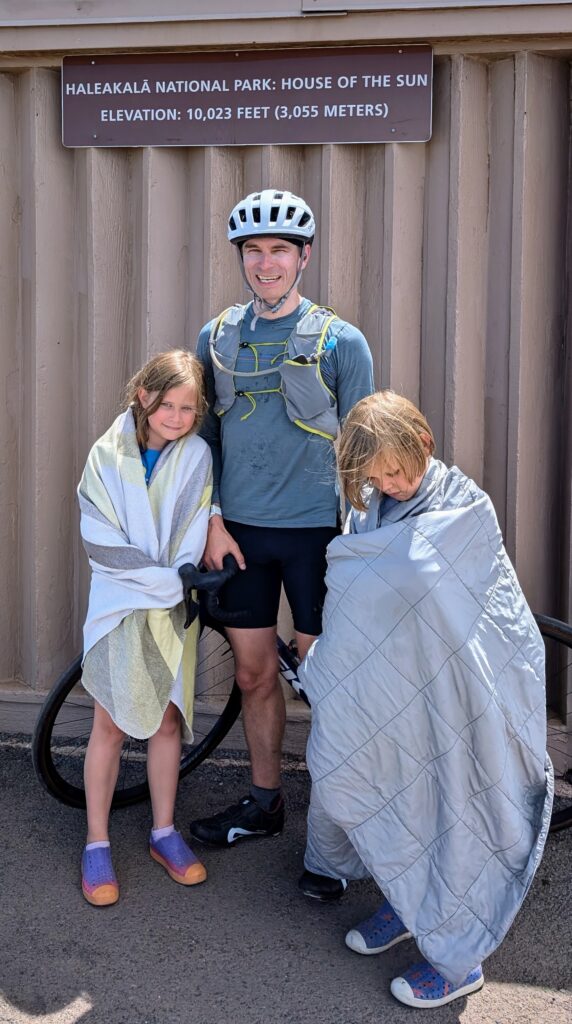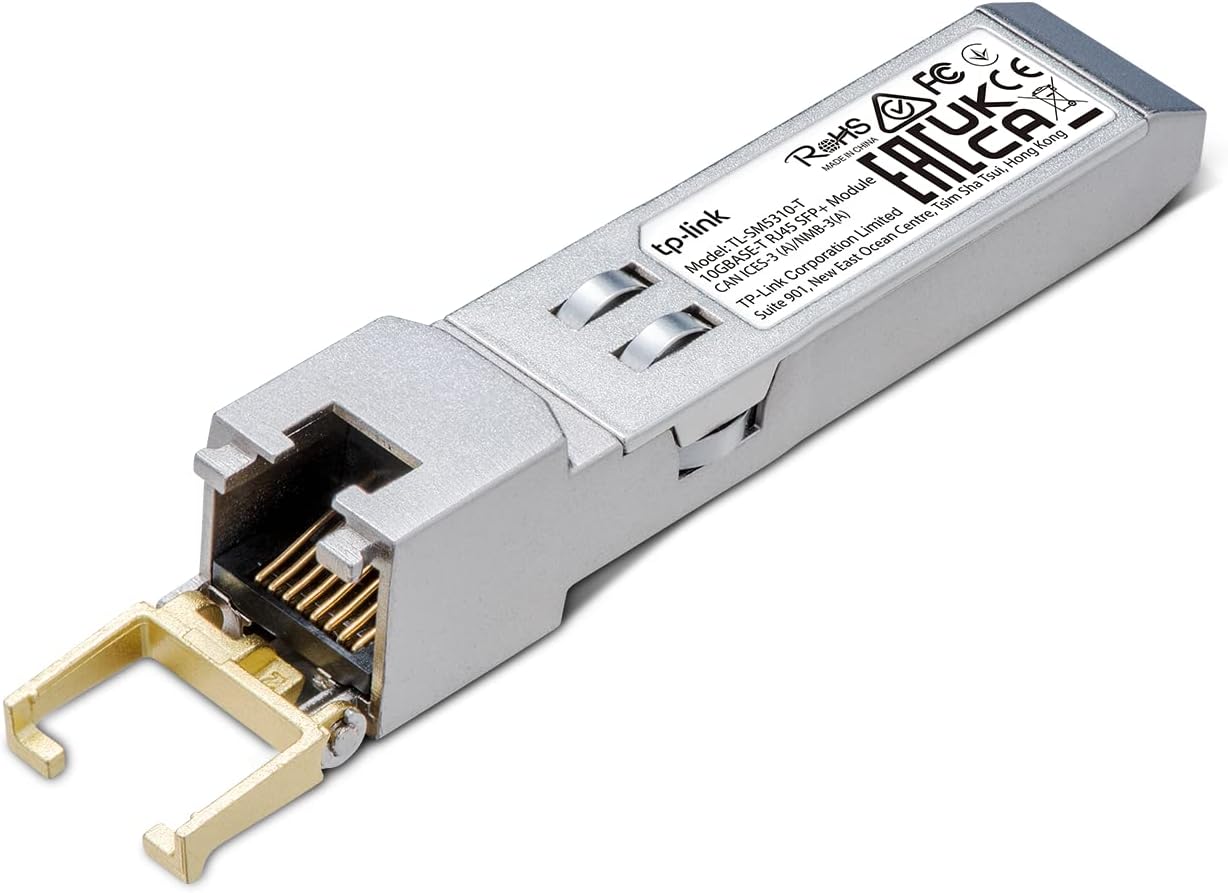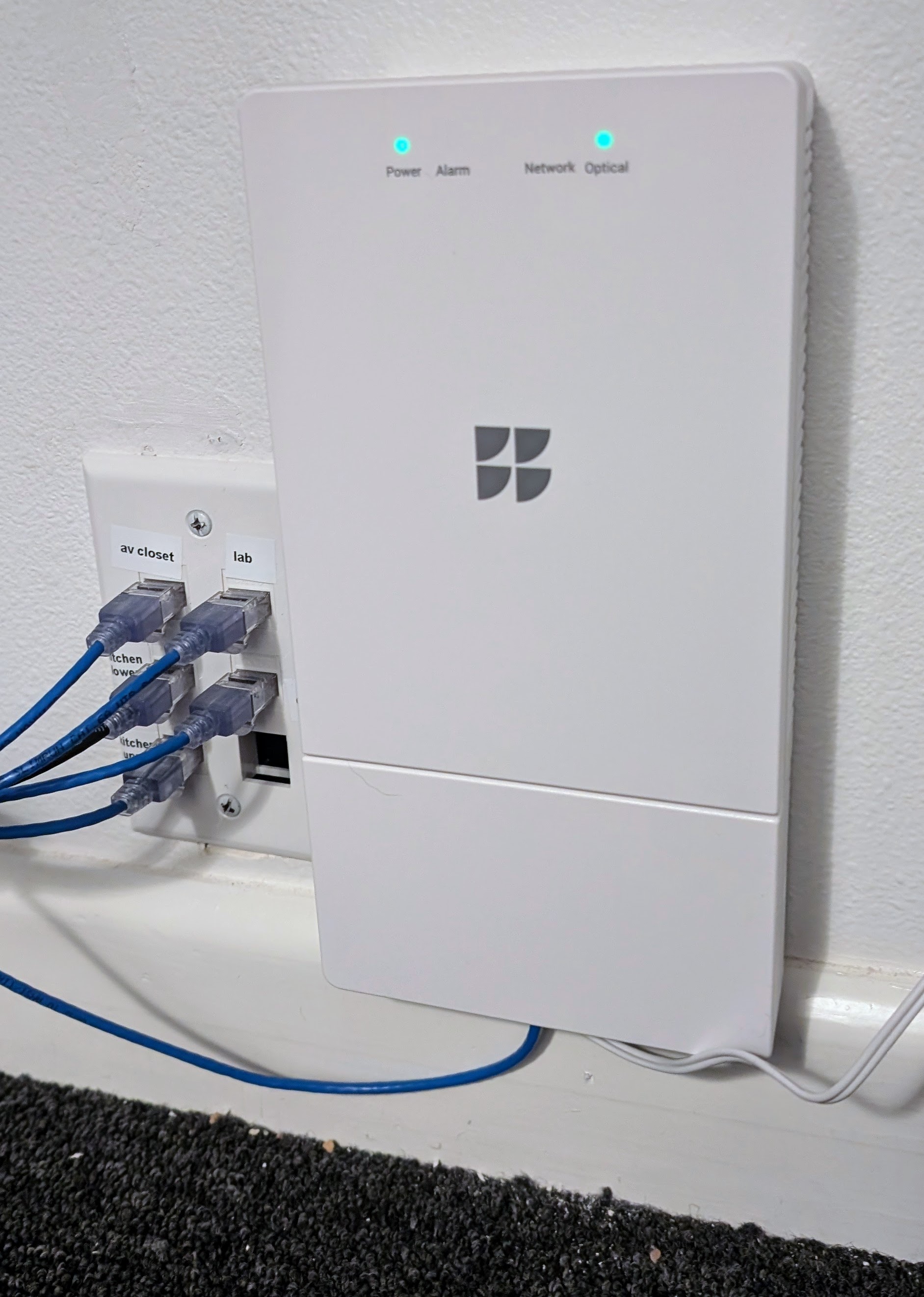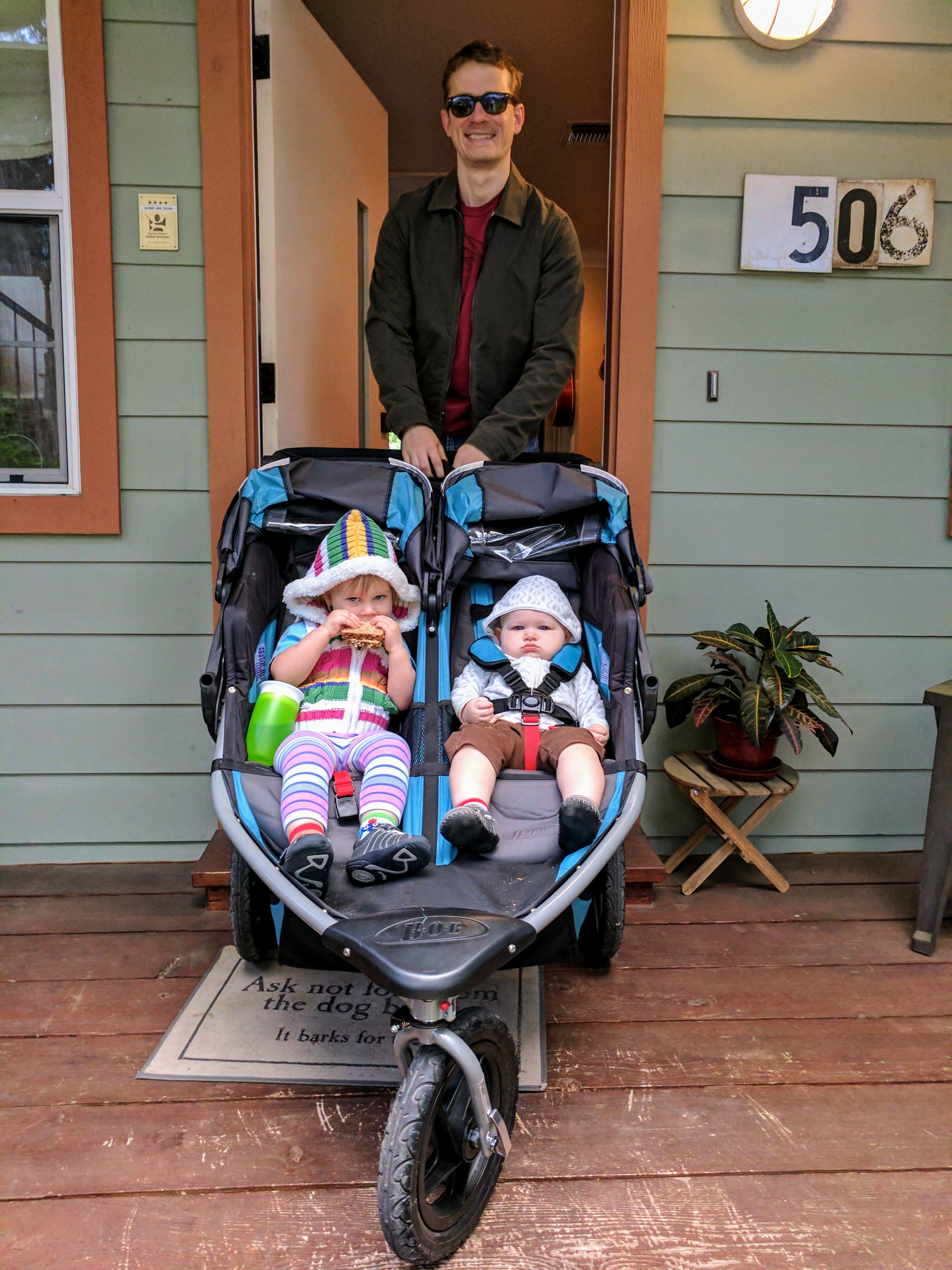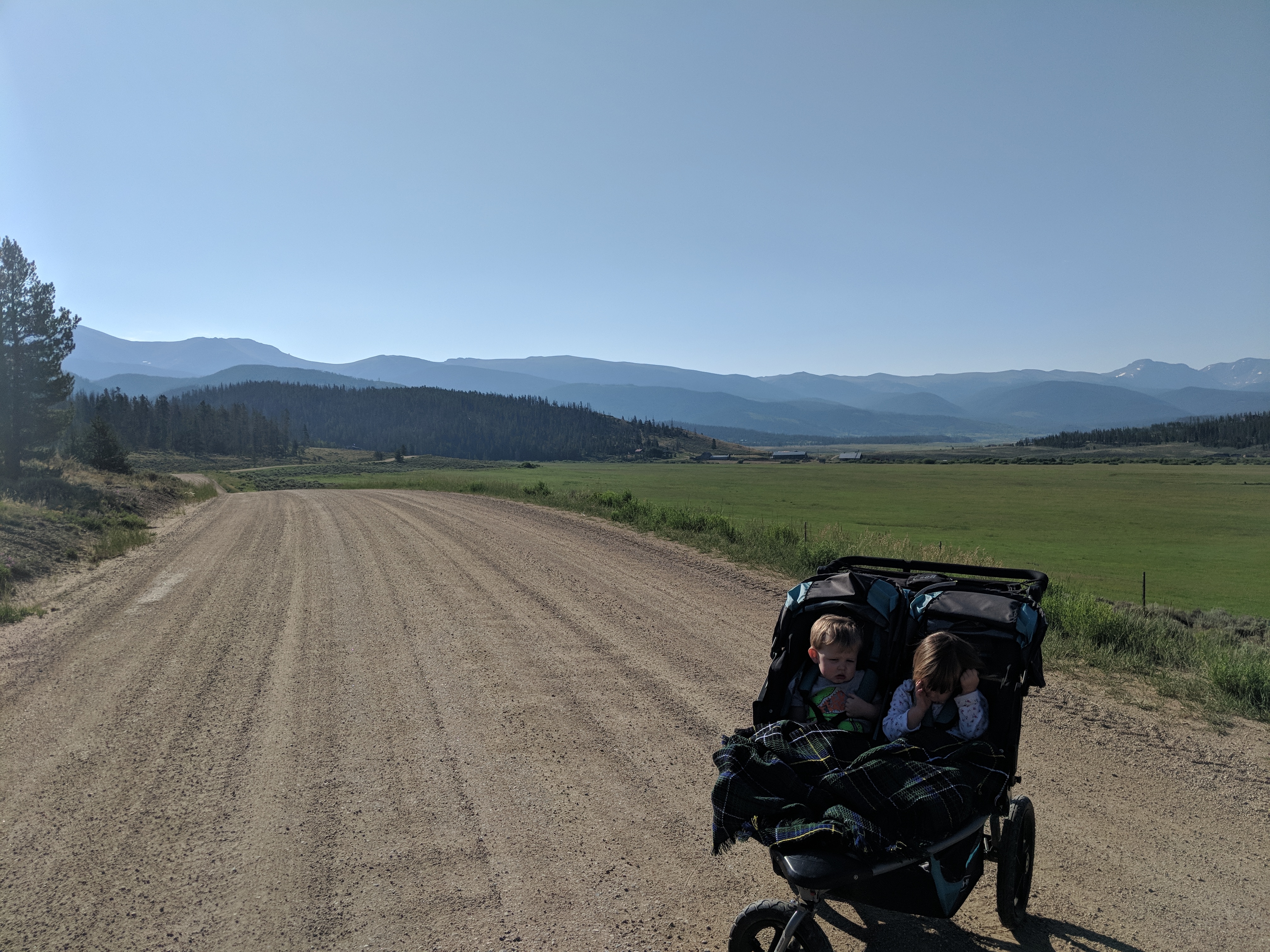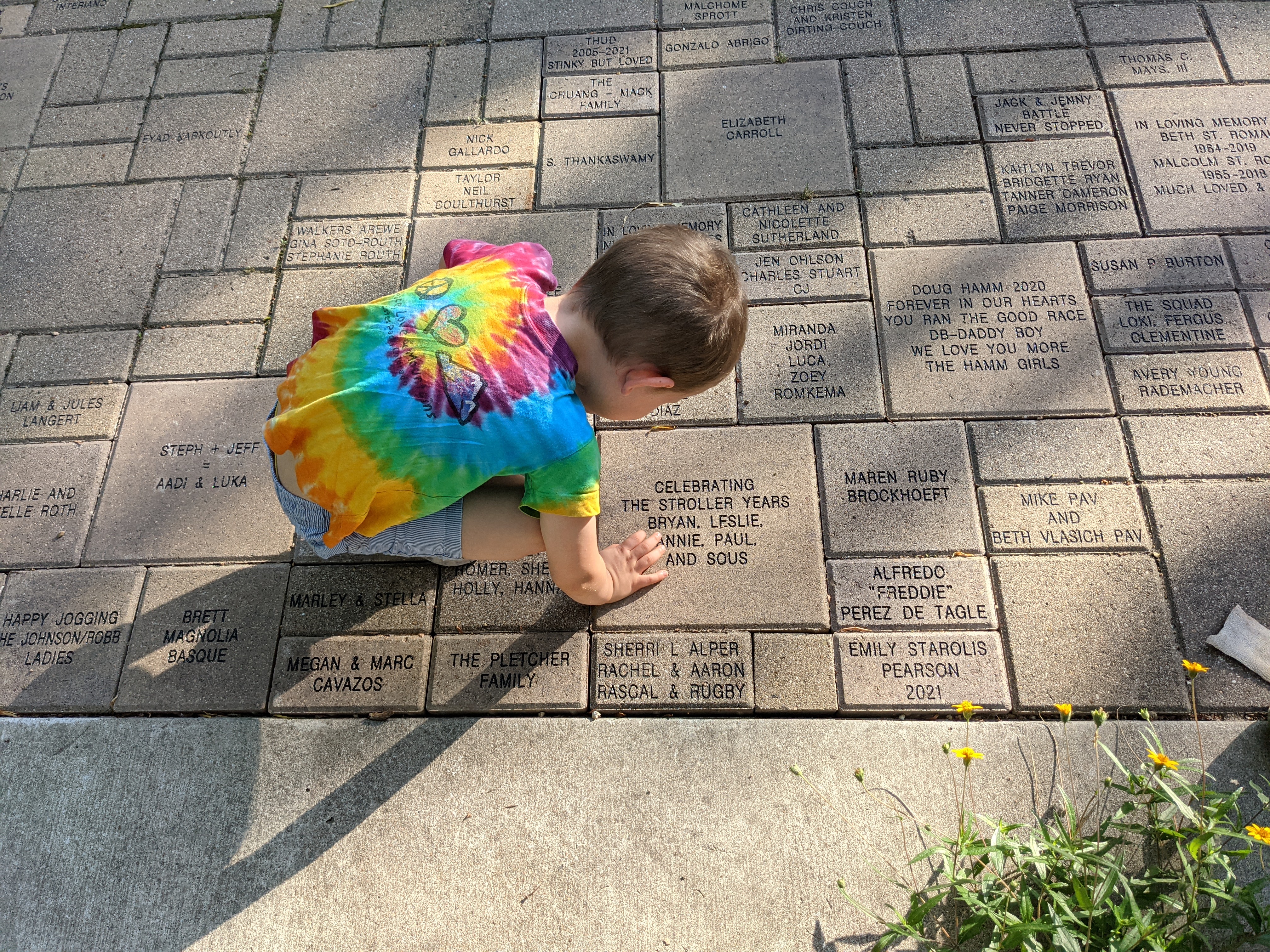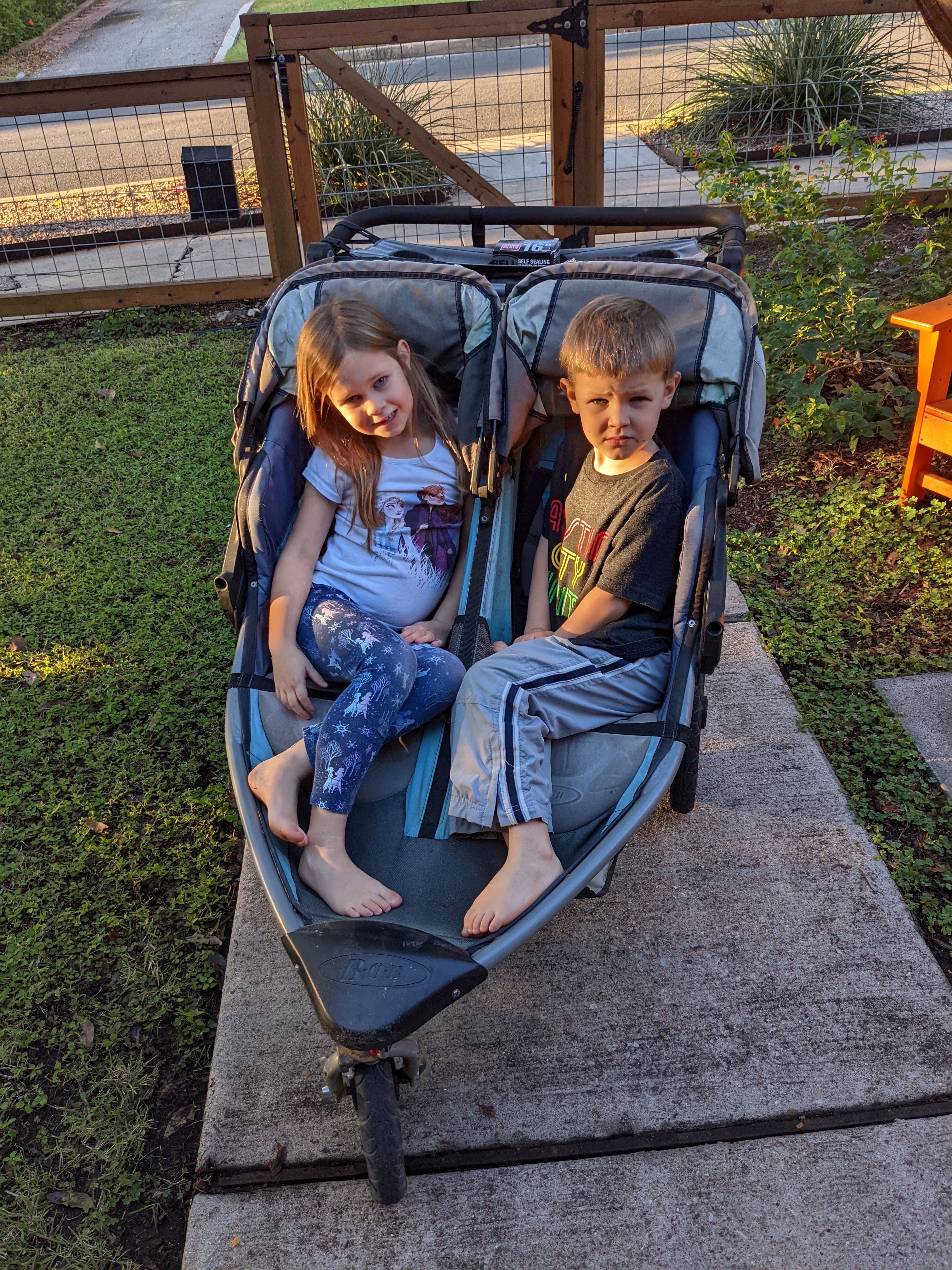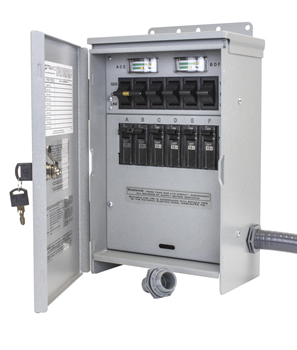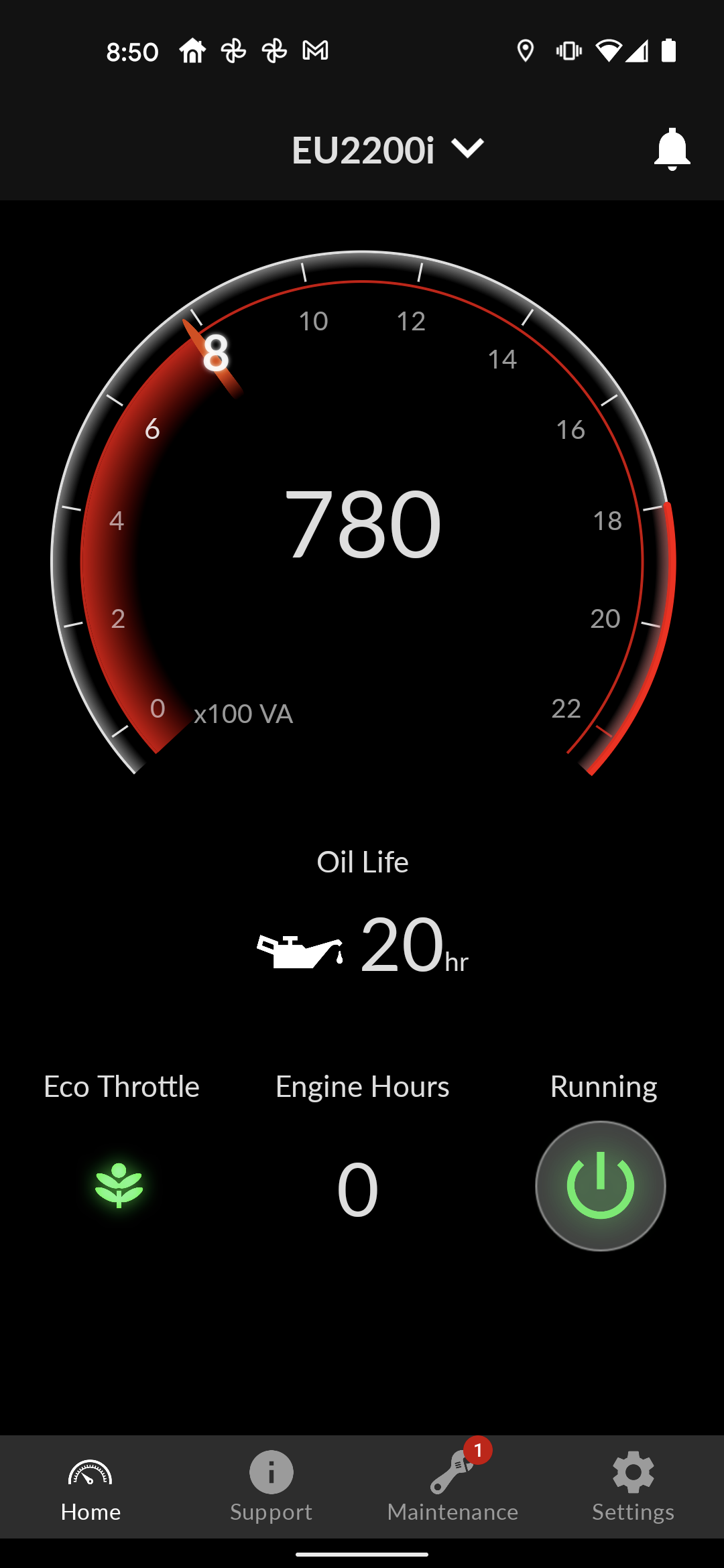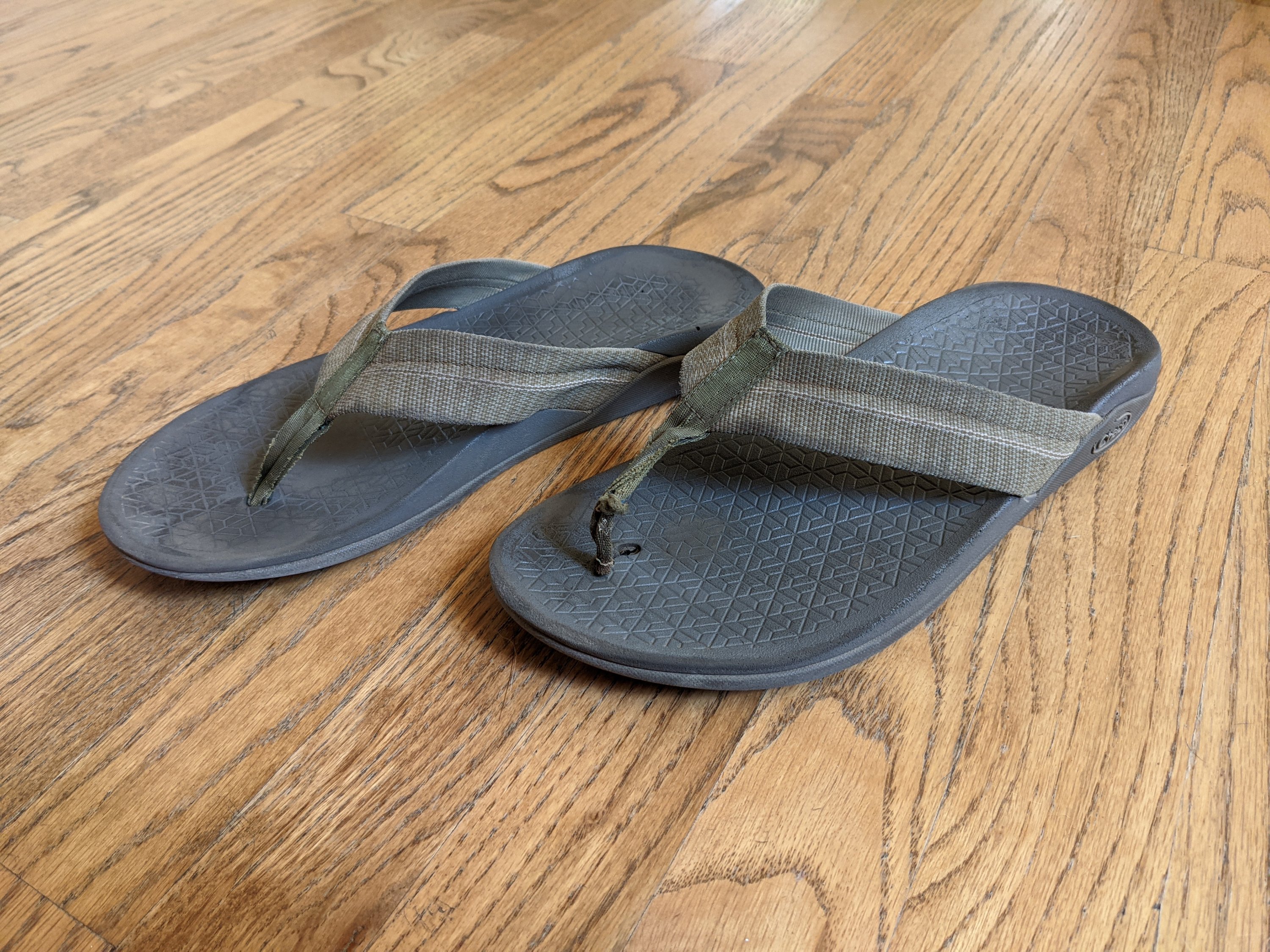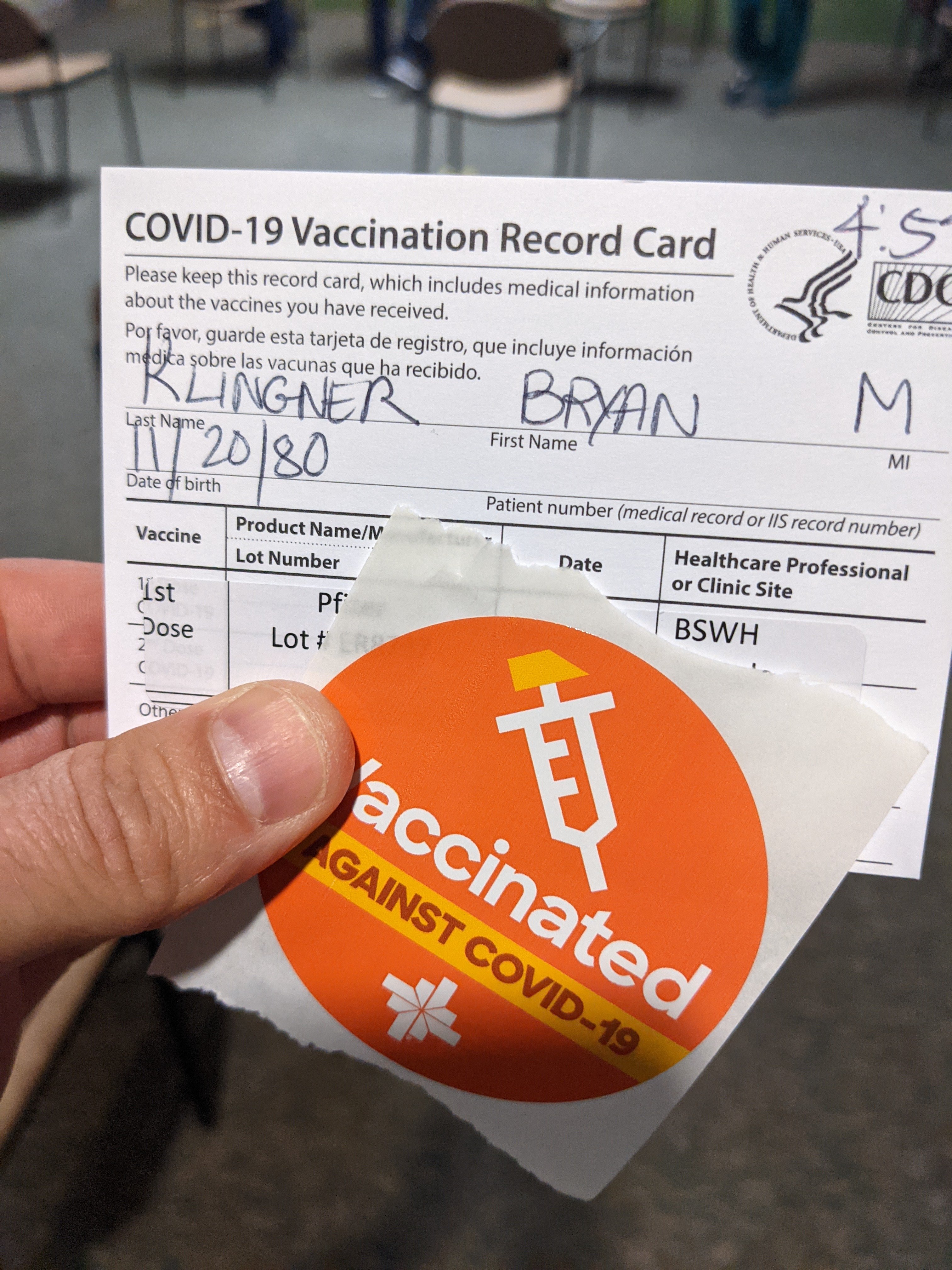To Paul: this is how you spent the day you turned 8 years and 9 months old.
Usually your mom does these posts but she’s off on a vision quest in Taos so I’m taking over for a guest post!
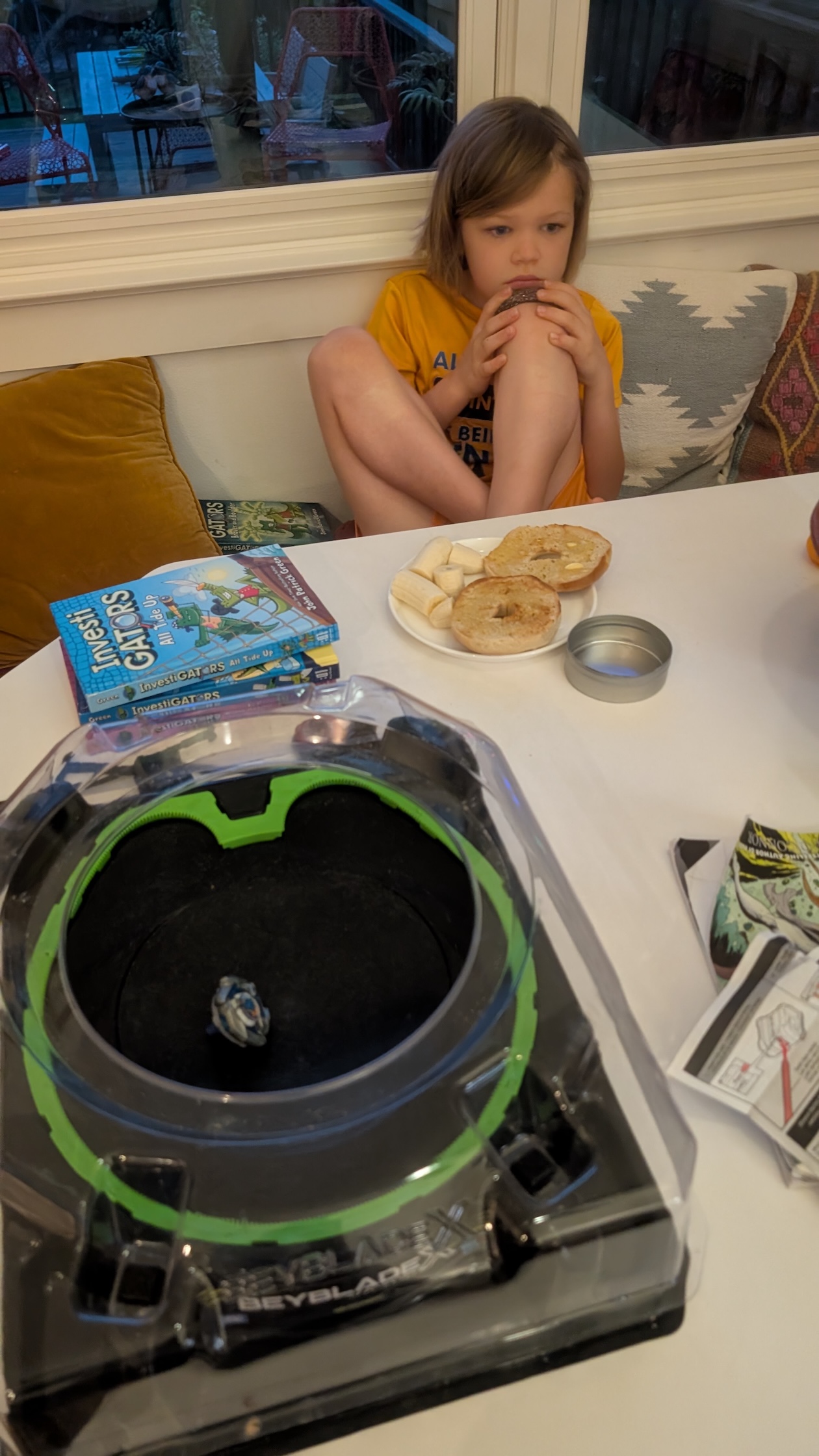
You rose in a pretty good but slightly delicate mood. I immediately began preparation of your current favorite breakfast: toasted, buttered bagels. You also recently acquired a BeybladeX battle arena where these little plastic and metal tops fight each other, and we played a few rounds of that to warm up to the day.

There was no safety patrol this week, which means that we were able to delay our departure until 7am sharp. You had a plan to show off your new Beyblades by whipping them out of your vest pockets after unzipping your Pokemon hoodie. No word on whether that actually happened.

You disappeared into your school day and I met you on the other side. I inquired how your day was, and you said “normal” and ended the conversation. I later learned you didn’t play Beyblades at school, but not the reasons why. You took off for a solo walk home due to an urgent pee need.
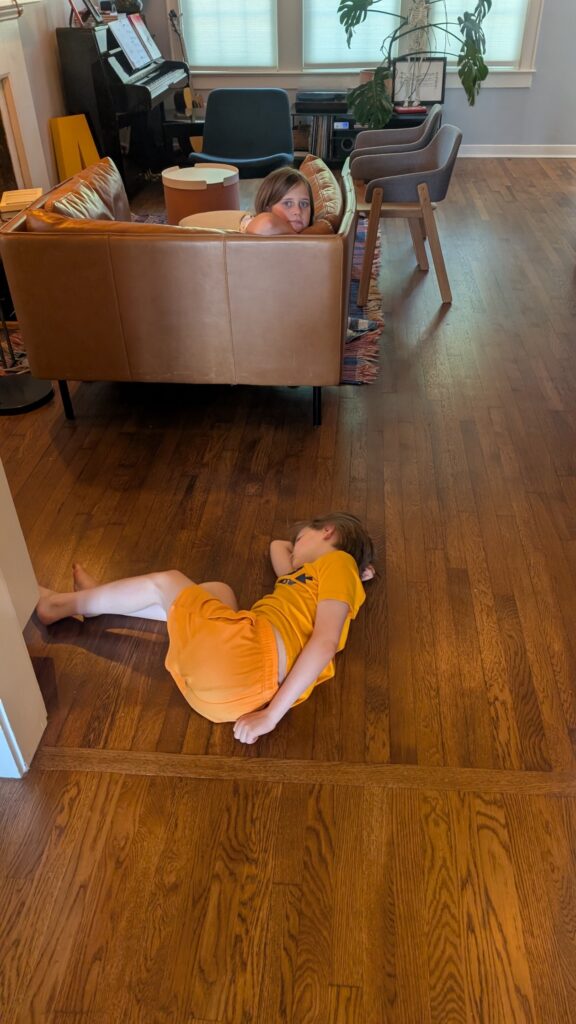
First, you request a “relaxing” day where we immediately start watching Bluey when we get home from school. I reject this plan, causing you to nearly tear your Investigators book in half with rage.
I then prepare you a beautiful snack of sugared strawberries, manzanita bananas, cotton candy grapes, and graham crackers, which you happily consume, then remind you of our agreement that we would all together either go climbing or do a Crunch Labs box (usually just Annie and I go climbing on Mondays but since I’m solo dad, we had to work together). You launch a fierce, tearful campaign explaining how you absolutely are not going to leave the house because (a) you’re exhausted (b) you hate climbing (c) Annie always gets what she wants and you never get what you want (d) you don’t like the air in the climbing gym because it’s chalky. After 20 minutes of careful negotiation, we agree you can play your Beyblades app in the parked car while Annie and I climb for 30 minutes.

After we arrive at the gym, you change your mind on all that and decide that you actually do want to climb! Luckily I have brought everyone’s climbing gear and we jump right into a nice happy 30 minute group climb. You seem eager to show off your climbing skills after months of opting out of this dad activity, and indeed you still have your mojo. There’s a bit of competition between you and Annie but we keep it civil with a promise of Snickers bars for you both on the conclusion.

Once back at home you and Annie launch another attempt at starting a Bluey marathon, but I rebuff you again and you remember your new bubble machine, which entertains you and Annie for a good 30 minutes while I prepare dinner.
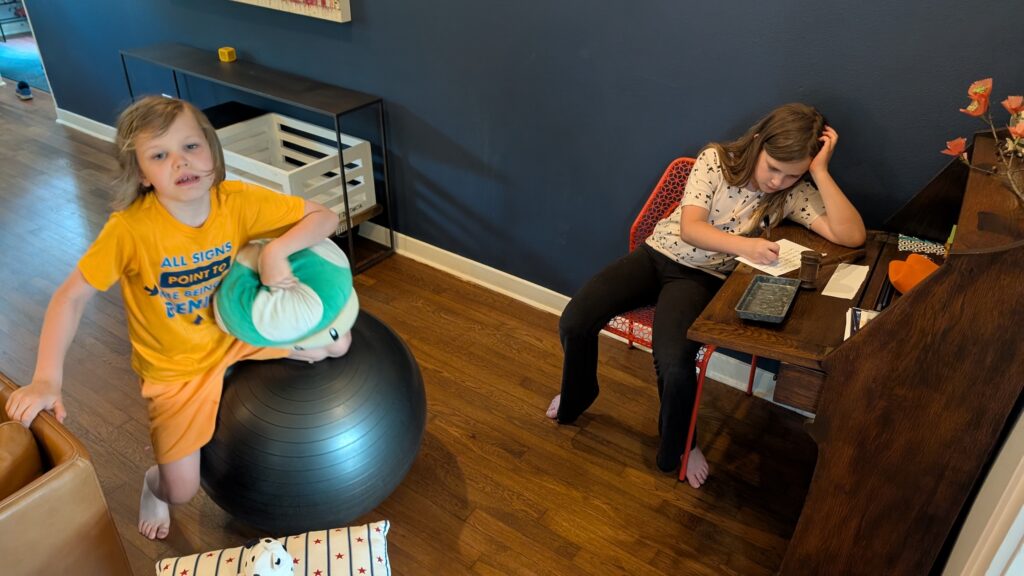
Annie rediscovers Mom’s gavel in her writing desk and we spontaneously convene a court make-believe game while dinner is cooking. I am a bit too good at inventing a crime where royal jewels are stolen from a museum, where I am a suspect along with Fetch the tiny Squishmallow. You say “let’s play this game a lot because I really like it,” and glory in your role as expert witness with the key piece of info to pin the crime on me. We eat a dinner of tortellini then finally, at last, you get to watch some Bluey with your sister.

You joyfully squeak to the Bluey antics for half an hour or so then beg an extra episode out of me by hustling to brush your teeth and change your clothes. I read you a chapter of Hank Zipzer book 15 and bid you adieu in the midst of a tickle war with your sister.

